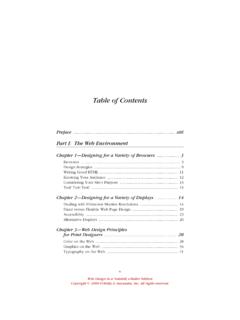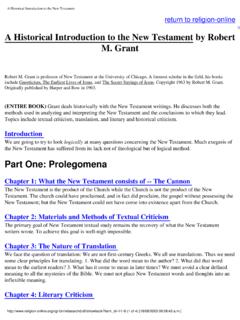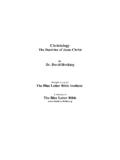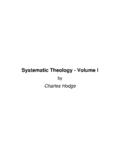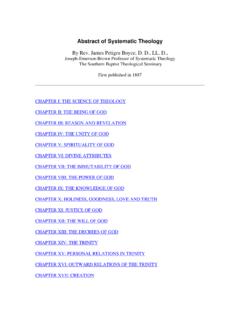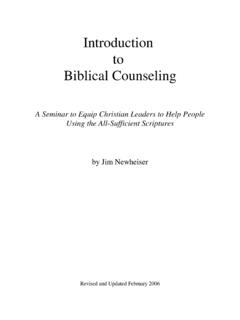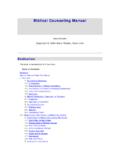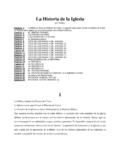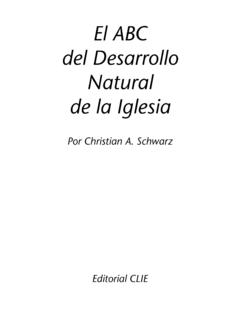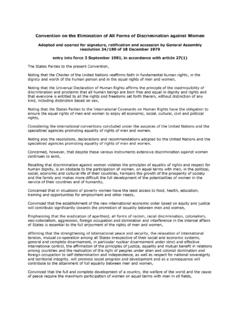Transcription of Sacred Hermeneutics - The NTSLibrary
1 Sacred Hermeneutics Lesson 1 A GENERAL INTRODUCTION* There he goes a flash across the heavens - Mercury the messaengers of the gods. Also known as the god of science, invention, eloquence, speech, writing and art. His Greek name is Hermes. Now look in Luke chapter 24:27 "And beginning with Moses and all the prophets. he EXPLAINED to them in all the scriptures the things concerning himself." (Luke 24:27) Explained (NIV) Interpreted (AV) the Greek word is DIERMENEUO. DIA means through, give a rough breathing to "E" and we have the exact word from which our English word Hermeneutics is derived HERMENEUO. A word used by Plato. Sacred Hermeneutics is the science and art of Biblical Interpretation. Hermeneutics IS:- 1. A science because it is guided by rules within a system. 2. An art because of the application of the rules.
2 3. By skill and not mechanical imitation. Hermeneutics is usually studied with a view to the interpretation of literature produced in the past. The special task is to remove the distance and differences between the author and the reader. In the study of the Bible, it is not sufficient that we understand the meaning of Secondary authors. Moses, Isaiah, Paul, John etc. We must learn the mind of the Holy Spirit. 1] THE PRIMARY NEED. 1. That God has spoken in Holy Scripture is the very heart of our faith - without this certainty we are left with that very dubious thing called HUMAN KNOWLEDGE God has spoken! But what has He said? This is the primary and basic need of Hermeneutics to discover what God has said in scripture; to determine the meaning of the Word of God. It is of no profit to us if God has spoken and we do not know what He has said!
3 2. We need a correct method of interpretation so as not to confuse the VOICE OF GOD with the VOICE OF MAN. Because Scripture has not been properly interpreted many strange things have crept into the church and cults. 2] THE SECONDARY NEED. We need to bridge the gap between our minds and the minds of the Biblical writers. 1. LANGUAGE. Bible was written in Hebrew, Aramaic and Greek. The English language is analytic in structure. The sense of the sentence depends largely on word order "the rat ate the cheese". Greek is an agglutinative language. You can move the words about and not change the meaning for meaning is not dependent on word order but on word endings, hence "the cheese ate the rat". You cannot have a word for word meaning of the NT. 2. CULTURE GAP. Until we can recreate and understand the cultural patterns of the various Biblical periods we will be handicapped.
4 Knowledge of marriage customs, economic practice, military systems, legal systems, agriculture all help. 3. GEOGRAPHY. We need to know about the difference of Israel to Egypt. Towns, rivers, mountains, lakes, the fertile crescent etc. 4. HISTORY. History is the plot of scripture. We need to know about the 400 years between the gospels to begin to understand the gospels. The PAX ROMANA (Roman Peace). The provinces of Asia have a history that helps us to understand Paul's travels (see Paul Treveller and Roman Citizen by Sir William Ramsey) A SPECIFIC INTRODUCTION. 1] Assumptions. We come to the text believing in its divine inspiration. This involved UNDERSTANDING the CANON OF SCRIPTURE. The textual critic is not adding or taking away but determining what was the original wording. This is a very complicated and difficult task.
5 2] Definitions. Hermeneutics applies to the general science of linguistics and meaning. Seeks to formulate particular rules. Stands in the same relationship as a rule book does to a game. The rules are NOT THE GAME but the game is meaningless without the rules. 3] Qualifications. "In order to appreciate and use the Bible, the reader of it must himself have the the same spirit which enabled its writers to understand their revelation of God and to record it. The Bible is a record, but it is not a dead record of dead persons and events, but a record inspired by the living Spirit who uses it to speak to men It is the medium through which the living God now makes himself known. But to find in it the Spirit of God the reader must himself have that Spirit" - Marcus Dods. 1. The reader must be born again John 3 2.
6 The reader must have a passion for Gods Word and to know Gods Word. 3. There must be a deep reverence for God. Meekness, humility and patience are prime virtues for understanding the Word. 4. Utter dependence on the Holy Spirit to guide and direct. 'To pray well is to study well.' NOTE: Do not confuse inspiration with illumination. The Spirit does not communicate to the mind of even a teachable, obedient and devout Christian any doctrine or meaning of Scripture which is not contained already in Scripture itself. He makes men wise up to what is is written - NOT BEYOND IT. 4] Equipment. 1. Hebrew and Greek text (latest editions) 2. Standard grammars, lexicons of Hebrew and Greek. 3. Concordances. 4. Commentaries. 5. Bible dictionaries and encyclopaedias. 6. Bible atlas. HISTORY AND PROTESTANT SYSTEM.
7 I. DEFINITION OF HISTORY OF Hermeneutics . We must distinguish between the history of Hermeneutics as a science and the history of hermeneutical principles. Science began in 1567 AD when FLACIOUS ILLYRICUS made the first attempt at a scientific treatment. The principles go back to EZRA. We look for the answer to 3 questions. 1. What was the prevailing view respecting scripture? 2. What was the main method of interpretation? 3. What qualifications were regarded as essential in an interpreter of the Bible? ii. TWO COMMON MISTAKES. 1. Provincialism = believing that the system in which one has been trained is the only system. 2. Traditionalism = assumes that certain traditional or familiar interpretations are the only adequate interpretations. Lesson 2 [1] BASIC SCHOOLS OF INTERPRETATION.
8 There are many schools of interpretation but I have chosen five which I think are the most popular today and easy to understand. 1. ALLEGORISM. This believes that beneath the LETTER (RHETE) or the obvious (PHANERA) is the REAL meaning (HYPONIA) of the passage. Allegory = extended metaphor. There is literal allegory which is intentional constructed by the author to tell a message under historical forms. Writers normally give a clue Pilgrims Progress. But we presume the document has a secret meaning (HYPONIA) and there are no clues then interpretation is very difficult. 2. LITERALISM. This method accepts as basic the literal meaning of the sentence unless by virtue of the nature of the sentence or phrase or clause within the sentence that it is not possible Figures of speech, fables, allegories do not admit to literal interpretation.
9 The spirit of literal interpretation is that we should be satisfied with the literal meaning of a text unless very substantial reasons can be given for advancing beyond literal meaning. 3. DEVOTIONALISM. This places emphasis on the edifying aspects of Scripture, and interpretation with the intention of developing the spiritual life - SPIRITUALISM. Gives way to mystical experience was very popular in medieval period. Some are called PIETISTS. Not wrong to say average Christian reads the Bible in the devo- tional tradition for his or her own blessing and spiritual food. Two weaknesses a) Falls pray to allegorisation especially OT where the Primary meaning of the passage is obscured. b) Devotional interpretations may be a substitute for the req- uisite exegetical and doctrinal studies of the Bible. 4. LIBERALISM.
10 Rationalism in Biblical studies boils down to the fundamental assertion that whatever is not in harmony with educated mentality is rejected. reached its full tide in 19th Cent. Now most theological colleges have accepted this in full for part. 5. NEO-ORTHODOXY. Neo = adding to. This was ushered in by Karl Barth at the end of World War 1. Brings together all kinds of bits and pieces. Part of this is EXISTENTIALISM = an anti-intellectualism, a philosophy of life based on the assumption that reality can only be lived but can never become the object of thought. [2] THE PROTESTANT SYSTEM. 1. Inspiration - The Foundation. With the Jews Protestants accept the inspiration of the OT. With the 's and Eastern Orthodox Church we accept the inspiration of the NT. We differ from the Orthodox groups in rejecting the Apocrypha.
